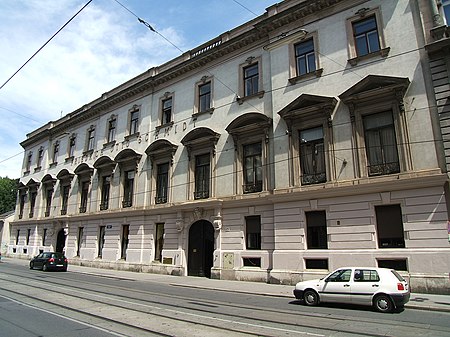Palais Chotek
Austrian building and structure stubsBaroque architecture in ViennaBuildings and structures in AlsergrundChotek familyPalace stubs ... and 1 more
Palaces in Vienna

Palais Chotek is a Baroque palace in Vienna, Austria. It is located at Währinger Straße 28 in the IX. district of Alsergrund. The building is named after the noble Chotek family. For over a century, it has been the headquarters of the Friedrich Otto Schmidt home furnishings company.
Excerpt from the Wikipedia article Palais Chotek (License: CC BY-SA 3.0, Authors, Images).Palais Chotek
Währinger Straße, Vienna Alservorstadt (Alsergrund)
Geographical coordinates (GPS) Address External links Nearby Places Show on map
Geographical coordinates (GPS)
| Latitude | Longitude |
|---|---|
| N 48.2188333333 ° | E 16.3580277778 ° |
Address
Palais Chotek
Währinger Straße 28
1090 Vienna, Alservorstadt (Alsergrund)
Austria
Open on Google Maps








